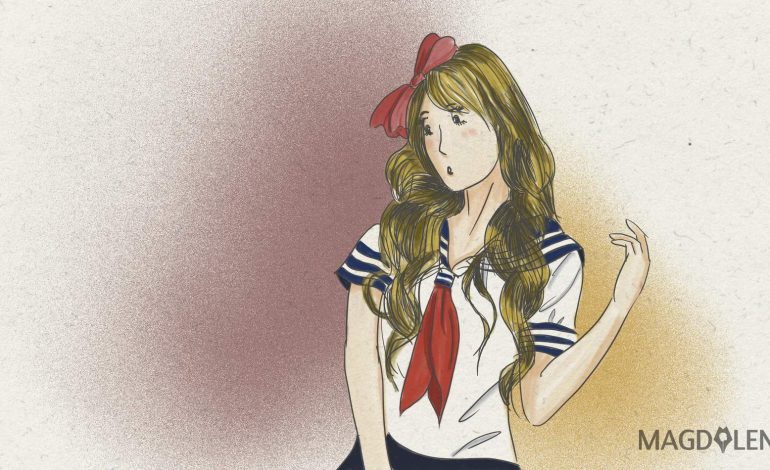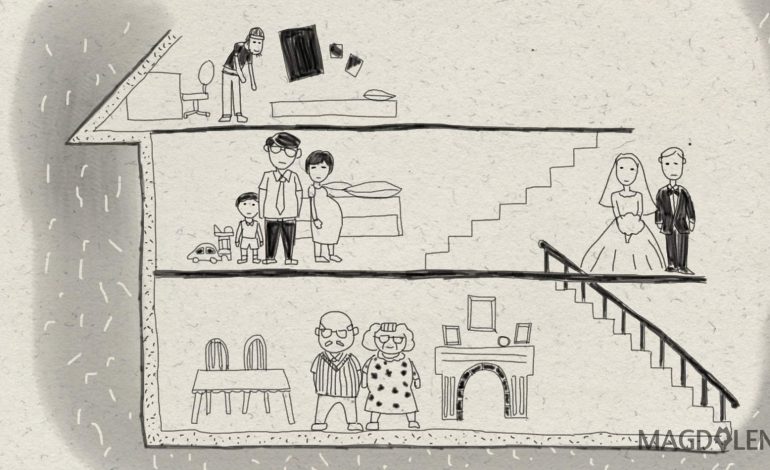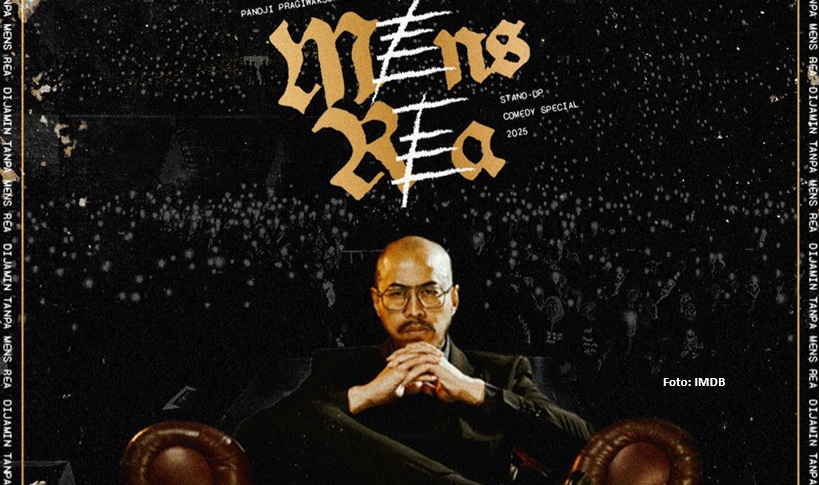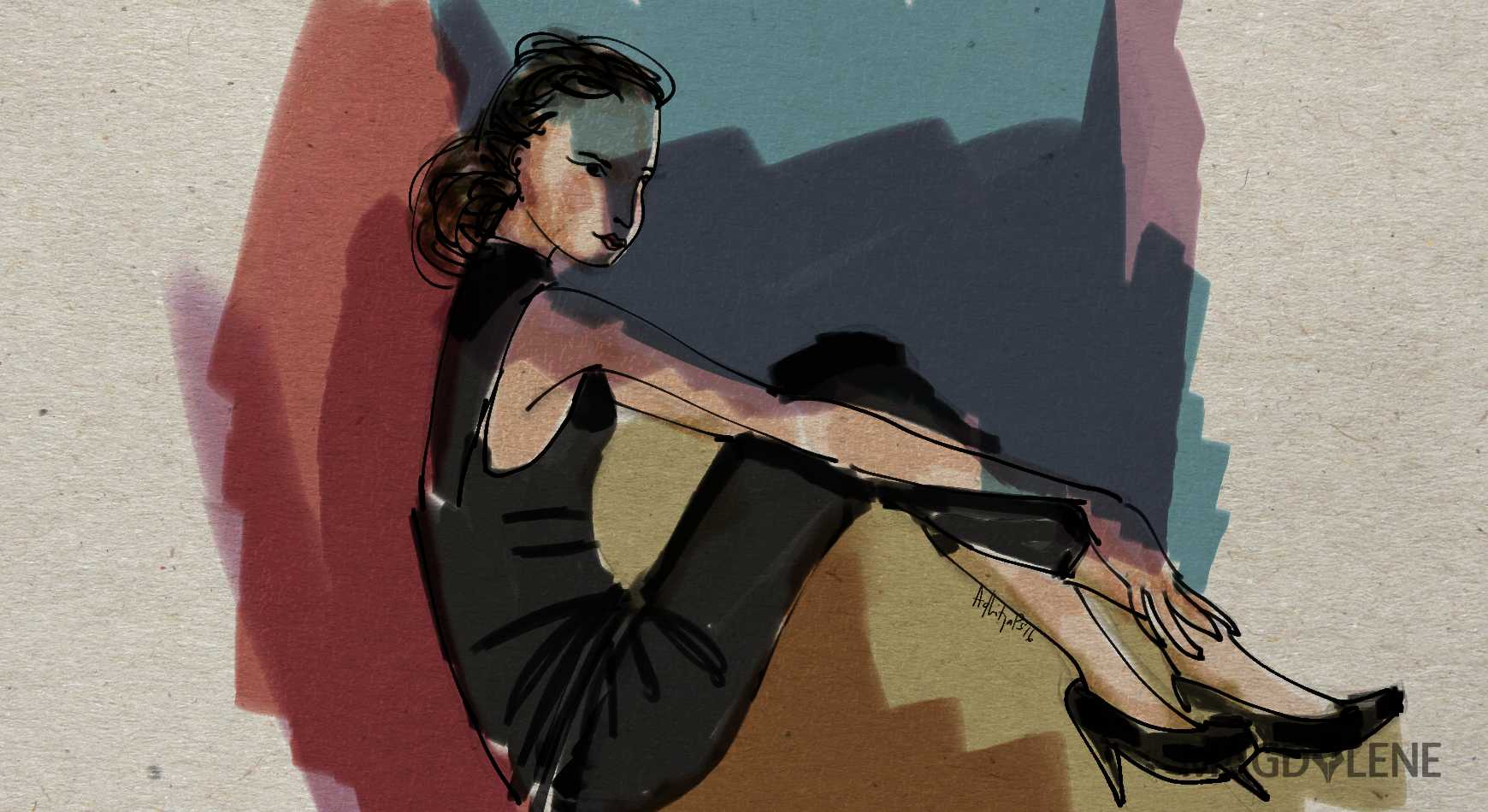Japanese Schoolgirl Confidential: Annals of a Nation’s Obsession

During the turn of the century, American technology magazine Wired believed that Japanese girls were the early adopters of cutting-edge consumer technologies, and so it sent correspondents to the front line of 21st century. Brian Ashcraft was one of them. With his working and later life partner Shoko Ueda, they published an encompassing guide to Japanese schoolgirls for international audience.
Actually, when I was an otaku (anime nerd) I was too embarrassed to buy this book. Buying a book about Japanese women is one thing; a book about Japanese girls is another. But Jennie M. Xue’s attack on kawaii intrigued me to find the answer. Why does Japan – and eventually the world – is obsessed with school girls?
The book is designed like a school notebook, with printed writing lines and “No.” and “Title” lines on top corners. The revised full color edition brings all the might of a Japanese fashion magazine I shamelessly browsed in my otaku days.
First topic is the uniform. The sailor-style uniform for girls became popular exactly a hundred years ago, replacing traditional garment. Evolutions came fast and wild since the 1970s, with fads and trends coming every five to 10 years. I got the first sign that something was wrong when a school uniform museum’s curator answers the question of whether uniforms will vanish with “Japanese people take great pride in their roles in society. Policemen should look like policemen. Schoolgirls should look like schoolgirls.” Actually that’s Confucian ethic, where everyone has a given role and has to stick to their single role.
I assume you have heard of AKB48. Indonesian guys like them partly thanks to the success of their Indonesian subsidiary JKT48. They are the latest in the 40 years of schoolgirl idols history. They live by the codes still followed by AKB48 junior members – no boys, no clubbing, no smoking. Senior AKB48 members were evicted from the group by the “graduation” ritual (a longtime tradition), to make way for fresher faces. I used to think that their fans are solely males. But at the end of every chapter, Ashcraft and Ueda interview a couple of schoolgirls (sometimes young adults wearing schoolgirl uniforms) about the chapter’s topic, and yes, women like AKB48 too and would like to be a girl band member if they could.
Now, the kawaii word. The word, meaning cute, was used to describe animals and babies, and again, since 1970s, started to be used to describe cute cartoon characters like Snoopy or Hello Kitty. So why are kawaii things popular? The authors will repeat this point several more times: kawaii captures both the nostalgic memories of youth time – and teenage years’ sparkle. School girls are the embodiment of that young and free spirit. Not everything in Japan has to be kawaii, but Japan wants the world to see it as kawaii. This includes the loud, pinky, and simultaneously bubbly and cynical Harajuku subculture.
Wired believed that Japanese schoolgirls were pioneers of technology, right? Ashcraft and Ueda argue that Japanese girls were the ones who started text messaging, using numbers as shorthand to acronyms and emoji on their pagers. They were early adopters of third generation mobile features such as camera and mobile web. Now they are hired as focus groups for market researchers advising online stores. On one hand the girls find independence in the unseen virtual world. On the other hand, they are more preoccupied with buying instead of producing and questioning, compared with teenagers in other parts of the world.
Can anything from the Japanese schoolgirl world resemble the American teenage feminist culture? There was the kogal (high school gal) subculture. They colored their hair since they didn’t want to have long black hair. They rejected skin whiteners. They wrote, drew and took pictures candidly for egg magazine in mid-1990s. After egg and the kogals found popularity, two things happened. First, the rebels escalated their physical edginess, whether in shortening their skirts or blackening their skin, for the sake of attention. By mid-2000s, egg had become another teen fashion magazine.
The last three chapters deal with schoolgirl representations in arts, video games, and comics. The chapter on art is surreal and graphic. But, sadly, like other Asian postmodern arts, although the paintings, photographs, and installments on the subject of schoolgirl can be provocative and risqué, it would not shake the status quo. Discussions on schoolgirls in video games and comics remind me why I was in love and fell out of love with these two media.
While American and Indonesian boys pretend to be American soldiers shooting Russians and zombies on their computers, Japanese boys play as a sensitive and introspective boy torn between four to five girls and a teacher. The popular “visual novel” computer games are no more than melancholic and electronic Choose Your Own Adventure, with the endgame of a sex scene with one of the chosen paths. But for fans and developers, that’s not the point. The point is to feel deep connection with the unrealistically drawn characters, to the point of crying over a tragedy portrayed in the game.
What’s the purpose of the crying game? To release the primal scream. That’s the part that disturbs me. First, so many Japanese men of all ages have to keep their real feeling and emotion concealed throughout the day, and release all their stresses by playing the game. Second, they could find emotional connection with the fictional and deliberately caricatured characters, while feeling detached toward real women in their lives.
The girls, meanwhile, play Nintendo and PlayStation games, where they can choose between several hunks – while admiring the kawaii big eyed and blue haired fictional girls. Unlike in the West, the boys and girls read different comics and play different video games. They don’t talk to each other even though they have similar interests.
Ashcraft and Ueda conclude that schoolgirls are rebels against conformity, but, sadly, I fail to see it. They are free spirited, popular, and energetic, but for Japanese adults to rely on them as symbol of life, freedom, and happiness is just lazy. Ashcraft, the dominant voice of this book compared to Ueda, certainly wants to give overall positive impression on Japan’s fixation with its teenage female population, and that is what the majority of his (and her) readers desire when they are picking up this book. It does answer my questions, but the answers are terrifying.
Japanese Schoolgirl Confidential: How Teenage Girls Made a Nation Cool (Revised edition), by Brian Ashcraft with Shoko Ueda, Tuttle, 2014, 208 pages.
Read Mario’s piece on video games and sexism and follow @mariorustan on Twitter.






















